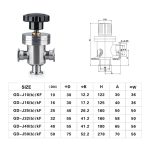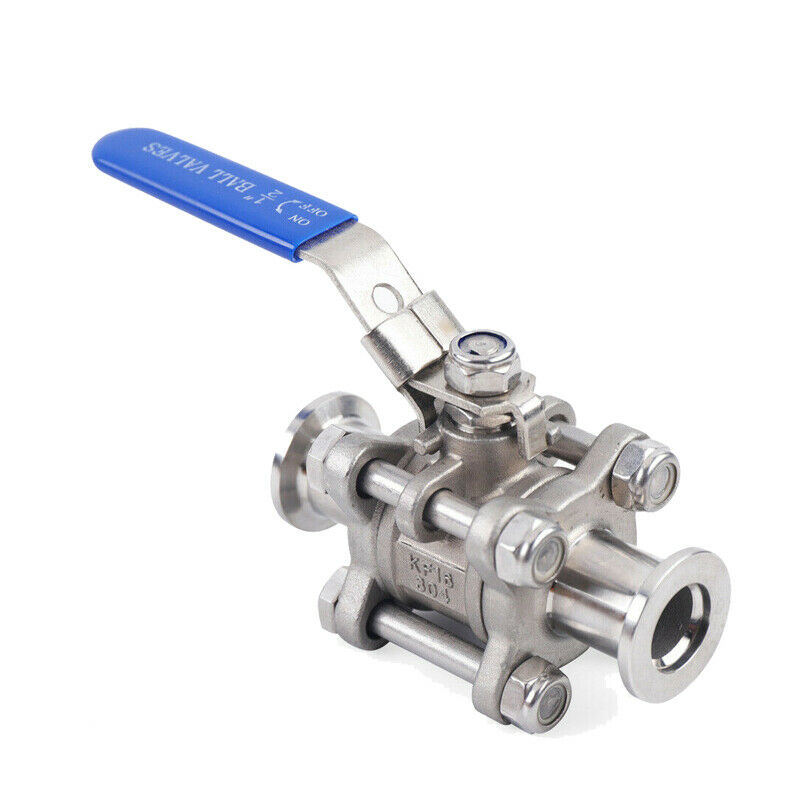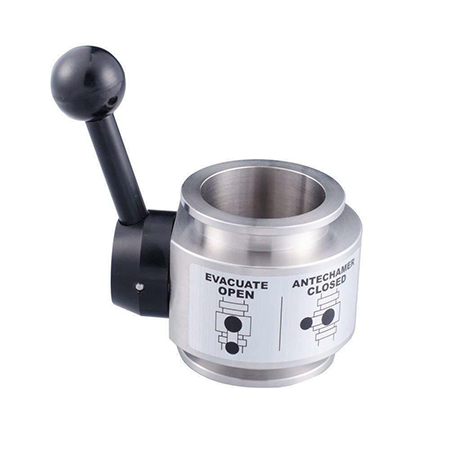
Introduction of Electric Butterfly Valve
- Interpretation:
The electric butterfly valve, also known as the electric valve, is equipped with an electric actuator on the butterfly valve to form an integrated industrial instrument with the function of regulating and controlling the medium.
- Principle:
The electric butterfly valve is mainly used for fluid flow adjustment and control. It is a non-linear device with a rotary angle of 0~90°. The opening of the rotary angle is not proportional to the flow rate, nor is it linear inversely proportional to the resistance. According to the different fluid properties, test methods are needed to obtain the parameter values of the control curve. It is necessary to install a travel switch as a positioner in the limit position, and the middle opening value can be used with an angle or distance sensor for the controller as a control parameter. It can also be used as open loop control, but the control error is relatively large.
- Type:
Electric butterfly valves can be classified according to different forms. First, they can be classified according to the principle of electric butterfly valves, according to the material of the valve, or according to the temperature of the environmental medium, or according to the connection form of the valve and the pipeline, Here I only talk about classification based on principles.
According to the principle of electric butterfly valve, electric butterfly valve products can be divided into: on-off type and regulating type. The switch type is simply to control the medium on and off; the regulating type uses 220V power as the power, accepts the command conveyed by the instrument automation control system parameters, and adjusts the flow of the medium.
4. use:
Electric butterfly valves have a wide range of uses, such as: electric power, petrochemical, metallurgy, water treatment, environmental protection, fire protection and other industries. They have a wide range of uses and a large amount of use.
- Features:
The electric butterfly valve has the characteristics of lightweight design, rapid opening and closing, and convenient operation. Moreover, part of the sealing parts of the butterfly valve can be replaced with good sealing performance.
- Parameters of electric actuator:
Action form: switch type, intelligent adjustment type (4~20mA);
Ambient temperature: -29℃~+70℃;
Power supply voltage: DC24, AC220V, AC380V;
Protection level: IP67, IP68;
Explosion-proof grade: dⅡBT3/T4;
Signal feedback: active signal, S passive signal;
With heater: the internal components of the actuator can be dried in a humid environment (optional).
Seven, the parameters of the butterfly valve:
General caliber: DN50~1800mm;
Valve body pressure: PN1.0~4.0MPa;
Applicable temperature: EPDM:-29~+120℃, NBR:-29~+80℃;
Connection method: wafer type, flange, welding;
Valve body material: ductile iron, cast iron, carbon steel, stainless steel, alloy steel;
Valve plate material: 304, 316, 316L nylon plate, aluminum bronze (cross sea water);
Applicable media: water, natural gas, air, steam, oil, liquid, suspended particles, and similar media;
Accessory requirements: manual mechanism, limit switch, positioner, solenoid valve, pressure reducing valve.







